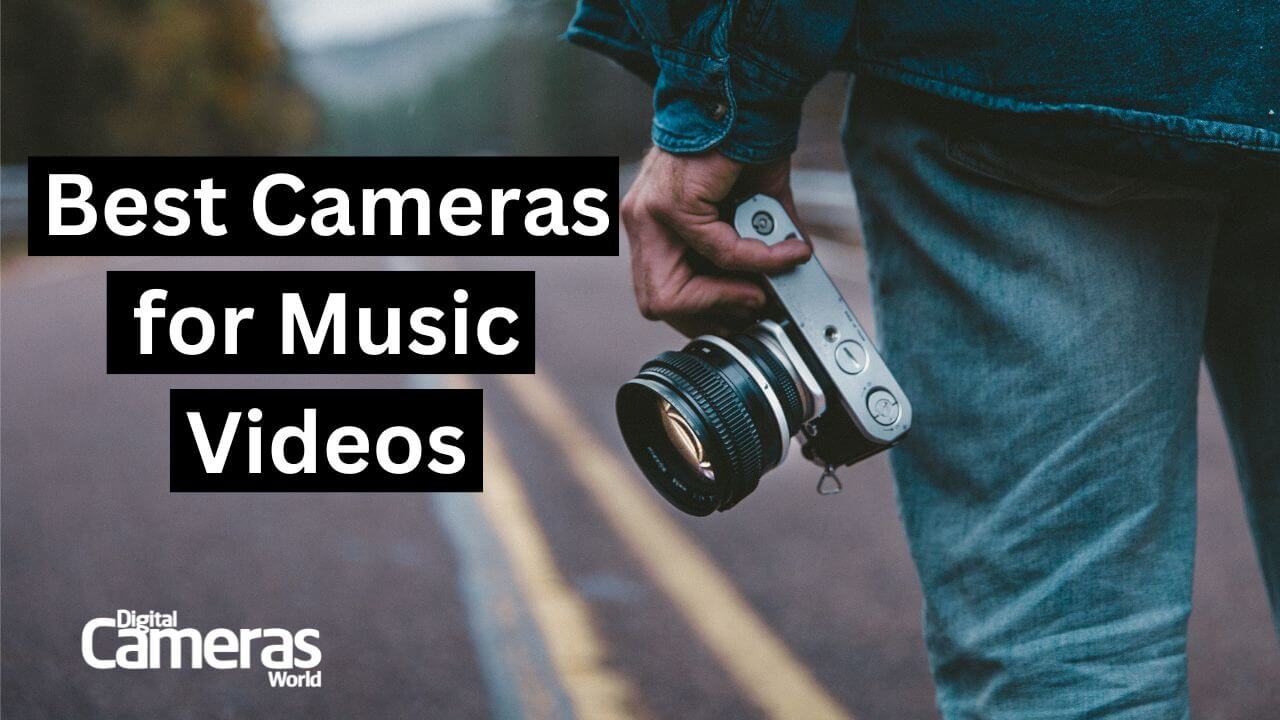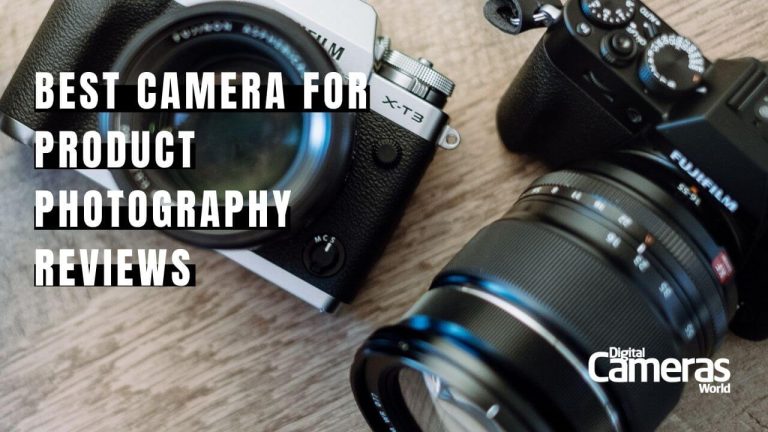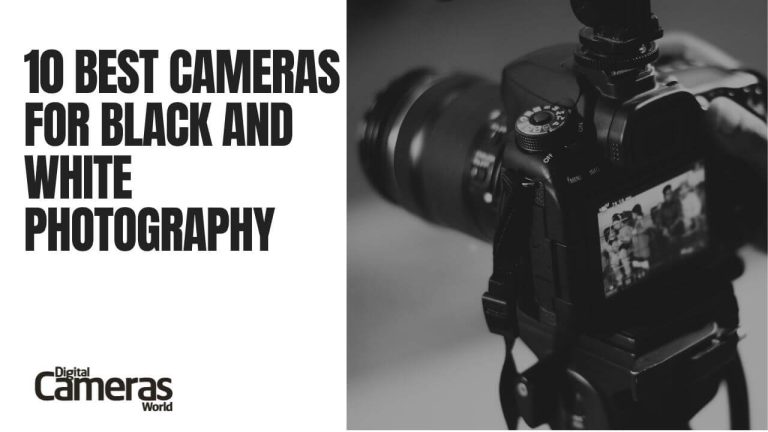10 Best Cameras for Music Videos in 2024 [Expert Guide]
Are you a budding videographer looking to make your mark in the industry? Are you a band ready to take your music to the next level with captivating visuals? Look no further! In today’s digital age, shooting music videos has become more accessible than ever, offering a platform for both artists and filmmakers to showcase their talent and creativity.
Gone are the days when music videos were reserved for established bands with hefty budgets. Thanks to platforms like YouTube and social media, aspiring musicians and filmmakers can now create and share their visual masterpieces with the world, opening doors to new opportunities and audiences.
But what makes a great music video? It’s not just about capturing performances; it’s about storytelling, creativity, and leaving a lasting impression. At the heart of every excellent music video lies a reliable camera capable of bringing visions to life.
Top 10 Best Cameras for Music Videos 2024
Join us as we delve into music video production and explore the top 10 best cameras for shooting music videos in 2024. From budget-friendly options to professional-grade equipment, there’s something for every aspiring filmmaker and musician. Let’s dive in and discover the perfect camera to elevate your music video game!
Lights, camera, action – let’s make magic happen!
Key Takeaways
- Discover the top cameras for shooting music videos in 2024.
- From budget-friendly options to professional-grade equipment, find the perfect fit for your needs.
- Elevate your music video production game with these recommended cameras.
1. Sony Alpha a6500 Mirrorless Digital Camera

- For one, the Alpha a6000 has an EVF, while the a5100 depends on the LCD for composition. Besides, at up to 11 fps persistent burst, the a6000 is twice as quick as the a5100 (6 fps).
The a5100 is marginally lighter, has better battery life (400 versus 360 shots for each charge), and uses a touch-responsive LCD screen. Be that as it may, on the off chance that you need more speed and lean toward an EVF for review, the Alpha a6000 is the better decision.
The black Sony Alpha a6000 Mirrorless Digital Camera is a flexible and progressed mirrorless camera including a 24.3MP APS-C-sized Exmor APS HD CMOS sensor and BIONZ X picture processor to create high-resolution despite everything pictures and Full HD films with stamped low-light quality and affectability to ISO 25600.
The 0.39″ 1,440k-speck True-Finder OLED EVF offers 100% casing inclusion and a refined optical structure to give a characteristic review point of view and amplification.
The body plan of the a6000 additionally houses a configurable UI, worked around a few adjustable catches and two control dials, for effective and natural access to now and again utilized camera settings. Also, a Multi Interface shoe is accessible for joining outside flashes, constant lights, or receivers.
It doesn’t come with an external microphone port. It features a small screen, which in reality is quite impractical for shooting by beginners.
Pros
- Fast continuous burst rate
- Great battery life for a mirrorless camera
- Large, high-resolution APS-C sensor
Cons
- No external microphone port
- A small screen that is impractical for shooting stills
- The screen is calibrated differently than the viewfinder which can be confusing
2. Blackmagic Design URSA Mini 4.6K Digital Cinema Camera
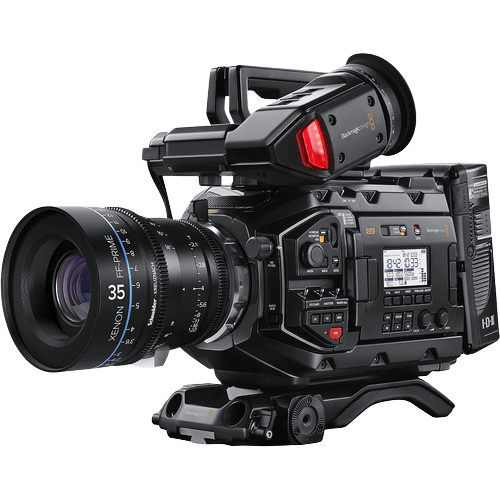
- Sony isn’t the main brand introducing the best cameras to shoot music videos we needed to acquaint you with the Black Magic Pocket Cinema Camera 4k.
Concerning video capacities, it is by a long shot the most developed framework to be found in the rundown. It has a double ISO miniaturized scale four-thirds sensor. In this way it has phenomenal ISO capacities, empowering you to shoot well in Low-Light. On the off chance that you would like to become familiar with low-light execution in cameras, you can look at our article on the best low light cameras.
Considering its value purpose of generally 1300$, it is significantly all the more amazing that it is fit for recording 4k 10bit at 60fps. With the BMPC 4k, you will be ready to shoot proficient artistic 4k moderate movement. Likewise, the BMPC 4k accompanies 13 stops of dynamic range, giving the client a considerable amount of opportunity for altering in post.
If you would like to shoot moderate movement at higher frame rates, the Black Magic Pocket Cinema is an extraordinary decision. It does 1080p at 120fps, which is certifiably not a distinct advantage, yet at the same time, you will have a video quality, that is a path over all recently referenced cameras.
The BMPC 4k offers sublime cash for esteem on the off chance that you need to plunge profoundly into filmmaking. Except if you would like to shoot exceptionally extraordinary moderate movement, it will suit your necessities. Particularly on the off chance that you do need progressively artistic slow-motion film, the BMPC 4k is the framework you ought to think about purchasing.
Pros
- 13 stops of dynamic range
- Very big 5″ Screen
- 10-bit 4k 60fps
- Very good price-performance ratio
- Great low light performance
Cons
- No 1080p at 240fps
- Not the best weather sealing
3. Canon EOS 5D Mark IV Full Frame Digital SLR Camera

- This best camera for shooting music videos has a 30.4MP limit and an ISO of up to 32,000. It can likewise capture 4K video. This makes it conceivable to make videos that will intrigue your customers. One of the more extraordinary highlights is the capture of Dual Pixel Raw pictures.
It takes into consideration what Canon calls “micro alterations”. This implies you can make little changes following the purpose of the center after having snapped the picture. This relies upon the lens that you’re utilizing and the impact is insignificant. Be that as it may, it’s a vital component in any case.
This Dual Pixel Raw capacity likewise permits the correction of ghosting. It’s basically when sun flare is seen on account of the light hitting the lens at a specific angle. The Canon 5D Mark IV is additionally Wi-Fi empowered. Syncing up to cell phones or your PC for file transfers is a breeze. The Wi-Fi ability is phenomenal for wireless tethering when on bigger shoots!
One of the huge advantages that this camera holds over past Canon 5D models is its treatment of low light circumstances. This makes it incredible for expanding your dynamic range in-camera, and particularly valuable when shooting video in low light.
Pros
- 30 MP full-frame image sensor
- The fast 61-point autofocus system
- 7 fps continuous shooting mode
- Unlimited JPG shooting buffer
- Pro-grade build
- Dual Pixel AF Live View focus system
- 2-inch touch screen
- Integrated GPS and Wi-Fi
- CF and SD card slots
Cons
- Cropped 4K video
- HDMI video in 1080p only
- Dual Pixel Raw function slows the camera down and offers limited benefits
- No integrated flash
4. Sony Alpha a6000 Mirrorless Digital Camera
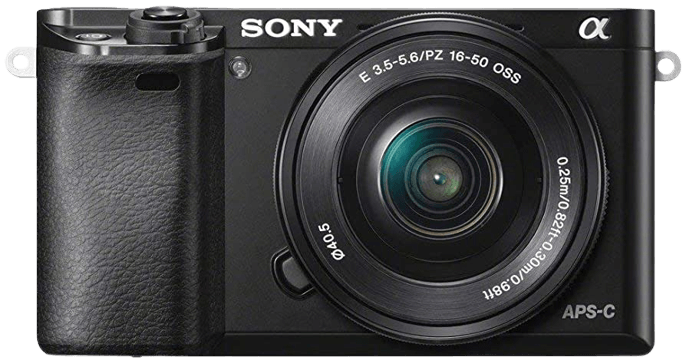
- It is one of the best cameras to record music videos by Sony available in the market nowadays. For one, the Alpha a6000 has an EVF, while the a5100 depends on the LCD for composition.
Besides, at up to 11 fps persistent burst, the a6000 is twice as quick as the a5100 (6 fps). The a5100 is marginally lighter, has better battery life (400 versus 360 shots for each charge), and uses a touch-responsive LCD screen. Be that as it may, on the off chance that you need more speed and lean toward an EVF for review, the Alpha a6000 is the better decision.
The black Sony Alpha a6000 Mirrorless Digital Camera is a flexible and progressed mirrorless camera including a 24.3MP APS-C-sized Exmor APS HD CMOS sensor and BIONZ X picture processor to create high-resolution despite everything pictures and Full HD films with stamped low-light quality and affectability to ISO 25600.
The 0.39″ 1,440k-speck True-Finder OLED EVF offers 100% casing inclusion and a refined optical structure to give a characteristic review point of view and amplification. The body plan of the a6000 additionally houses a configurable UI, worked around a few adjustable catches and two control dials, for effective and natural access to now and again utilized camera settings. Also, a Multi Interface shoe is accessible for joining outside flashes, constant lights, or receivers.
It doesn’t come with an external microphone port. It features a small screen, which in reality is quite impractical for shooting by beginners.
Pros
- Fast continuous burst rate
- Great battery life for a mirrorless camera
- Large, high-resolution APS-C sensor
Cons
- No external microphone port
- A small screen that is impractical for shooting stills
- The screen is calibrated differently than the viewfinder which can be confusing
5. Nikon Z6 Full-Frame Mirrorless Camera
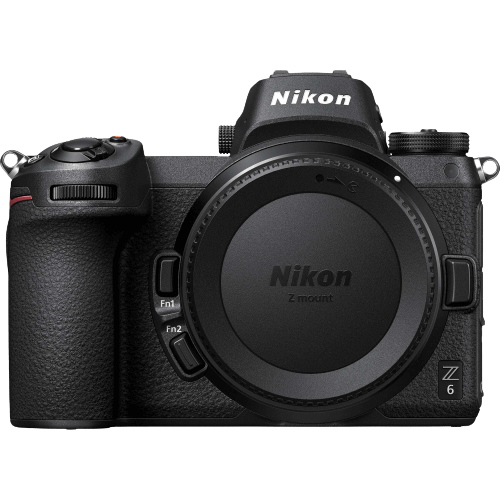
- Z6 is one of the best cameras for music videos on the planet at present. It includes a lower-resolution sensor than its progressively costly kin, however that implies it performs marginally better in low light, in addition to it encourages quicker edge paces of up to 12fps.
. Something else, dealing with and manufacturing quality is equivalent to the Z7, as both utilize indistinguishable bodies.
Nikon has truly given the picture taker thought when structuring the Z 6 (and by augmentation the Z 7). Offering DSLR-like taking care of in a little – yet not very little – body. If you’re someone running over from Nikon DSLRs, at that point you’ll feel right comfortable getting the Z 6. A decent estimated handgrip causes it to feel extremely great to use for significant periods.
At launch, Nikon brought out three exclusive focal lenses, a 24-70mm f/4 focal lens, a 35mm f/1.8 and a 50mm f/1.8. In the interceding months, two additional optics have gone to the market, including a super-wide-edge 14-30mm f/4 focal point and a 24-70mm f/2.8 focal lens, which is focused on masters.
Even though we expect more not long from now, for the time being, it’s a moderately constrained line-up. Be that as it may, there is consistently the alternative to swearing by utilizing the Nikon F mount focal lens through the discretionary adapter.
Controls are spread over the Z 6’s body in a truly reasonable course of action, that gives unquestionably more breathing space for the catches than the Sony mirrorless models, which have consistently felt just somewhat ungainly to utilize.
A drawback – for some – is the single XQD card slot, however, when a camera is this acceptable, we can excuse it.
Pros
- Superb high-ISO quality
- Full frame 4K video
- Build quality and handling
Cons
- Average buffer capacity
- Single XQD card slot
- The limited native lens range
6. Fujifilm X-T2 Mirrorless Digital Camera
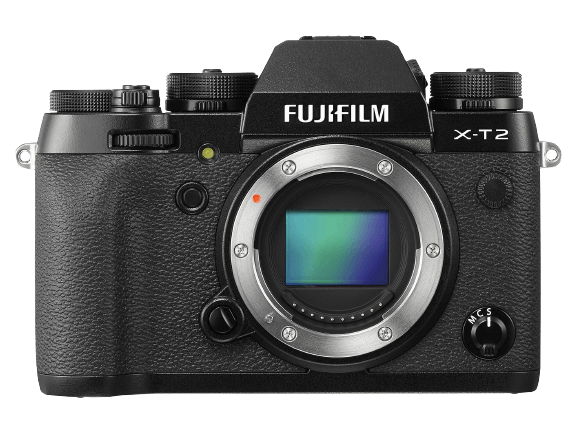
- If you are looking for a cheap camera to shoot music videos but that has it all then you should stop looking for a camera, as you read about this one, you will instantly buy it because it has an interchangeable lens.
. It is also compatible with Fuji Film X with 3 exposure controls and with built-in Bluetooth of 802.11b / g / n and it also features a UHS-II standard SD card. It has a lens of 24.3 megapixels with X Trans CMOS III with an APS-C sensor that reduces false colors and noise that results in improved colors of the image and quality as well. For fast image processing, it uses the system of X process pro with faster AF. It is resistant to dust and moisture and it can bear the temperature of 0 to 14 degrees Fahrenheit with 63-point.
It has a display screen which is 0.48 inches and has a resolution of 2.36 million pixels per inch and the display also features an OLED viewfinder with a lag time of 0.005 seconds. It records video with Full HD and 4k with a resolution of 3840×2160 with 30, 25 and 24 frames per second and it also uses a card of UHS speed class 3 and higher.
It is available in black color and it is made of steel and plastic combined. It weighs 3.5 ounces and its dimensions are; 9.6 x 7.7 x 5.2 in inches concerning length, width and thickness and it has a warranty for some months. It is available with base and Fuji Film VPB-XT2.
This best camera for music videos by Fuji in our list of best cameras for music videos in 2024 comes with a small screen as well as it is difficult to carry.
Pros
- It is easy to use.
- It is very portable.
- It has a lot of features.
Cons
- It is not durable.
- The display screen is very small.
- The display screen is not satisfactory.
- It is heavy.
7. Nikon D5200 24.1 MP CMOS Digital SLR Camera
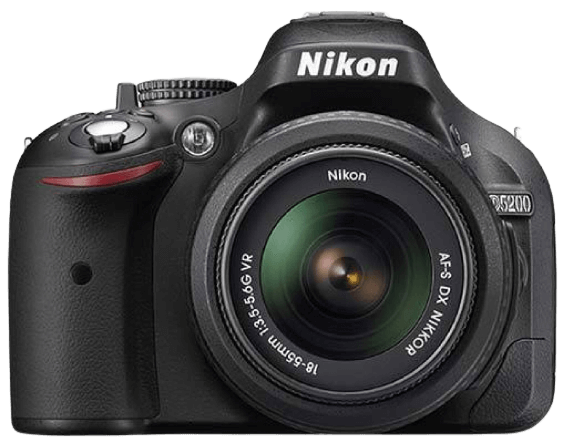
- The Nikon D5200 has a 24.1 megapixel CMOS sensor and a 39-point dynamic territory self-adjust framework that considers 3D tracking. This camera takes 1080p video at 30 frames for every second.
The 921,000-speck vari-angle display permits you to effectively make efforts from practically any position which can be significant on the off chance that you are shooting a dynamic and extraordinary music video.
Another element of the Nikon D5200 that can prove to be useful during a music video shoot is its capacity to take great shots in both exceptionally splendid and dull territories with its work in a high-powerful range.
High-unique range or HDR implies the camera goes after various presentations and afterward mixes them into the most ideal picture. This can be a fabulous instrument, particularly in case you’re shooting stills for the band/music artist.
There is noticeable barrel distortion at 18mm, about 3.3 percent. This will make straight lines discernibly bend outward, and is ordinary for an 18-55mm design. It very well may be rectified with the software on the off chance that it distracts from your photographs.
Pros
- Excellent image quality.
- Fast autofocus.
- 4fps continuous shooting.
- Sharp Vari-angle LCD.
- 39-point autofocus system.
- Fast to start and shoot.
- 1080i60 video capture.
- Wi-Fi and GPS add-ons available
Cons
- Small Pentamirror viewfinder.
- Will not autofocus with screw-drive lenses.
- The noisy focus during video recording.
- Only one control wheel.
8. Panasonic Lumix GH5 4K Digital Camera
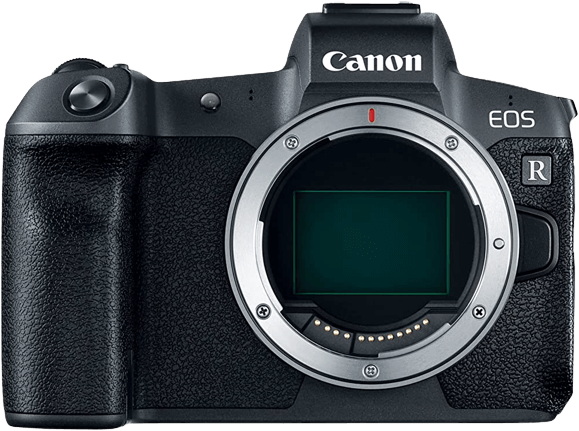
- Panasonic has included the much-applauded IBIS and 5 Axis Dual IS 2 Image adjustment that was found in the GX85 and G85 models. Works notwithstanding when recording 4K video. The 4K Ultra HD recording presently hops to 60p (60 outlines/second) for velvety 4K for games and other activity scenes.
For 4K you can record in UHD (3840 x2160) indistinguishable measurements from 4K TVs, or DCI Cinematic 4K (4096×2160) similar measurements utilized for Movie Theater 4K projectors. Double card openings permit you greater adaptability, for example, backing up, or relay recording. The GH5 has another OLED EVF (3,680k-speck), and a higher resolution 3.2-inch LCD (1,620k-dot).
The Panasonic Lumix GH5 is on the highest point of the Panasonic Mirrorless ILC camera lineup. This has numerous significant moves up to the extremely mainstream GH4 show. The new imaging sensor has a higher resolution (20.3 megapixels) with a higher unique range and is sharper gratitude to the expulsion of the AA filter.
The greatest included element is body image stabilization (IBIS), which alongside lens stabilization can offer 5 Axis Dual IS, enabling you to take photos with longer handheld exposures, or blur and jitter-free video. This is the principal Panasonic mirrorless camera to offer 60 frames/second in 4K, incredible for games and high activity occasions. The camera is climate sealed and can be utilized in a frosty climate outside.
Panasonic has pressed a large portion of what the cutting edge movie producer would need in a 4K camera including, Cinematic and UHD 4K taping modes, flip-out LCD screen, mic and earphone jacks, Fast USB 3.0, V-Log alternative, XLR choice, high bitrates, full-size HDMI out, IBIS, remote ability, and high framerates.
You can control most GH5 camera capacities, and spotlight remotely on your cell phone or tablet utilizing Wi-Fi and Panasonic’s APP. There is no extra central length crop in 4K or FHD Video. This is an extraordinary upgrade from the GH4 model.
The Panasonic DC-GH5 Lumix 4K mirrorless ILC camera features a delicate design. It is available at a high price tag as compared to other brand flip out cameras available in the market today.
Pros
- Built-in Wi-Fi
- 4K-6k video recording
- Flip out LCD screen
- 20.3 megapixel
Cons
- Fragile design
- High price
9. Sony Alpha A6100 Mirrorless Camera
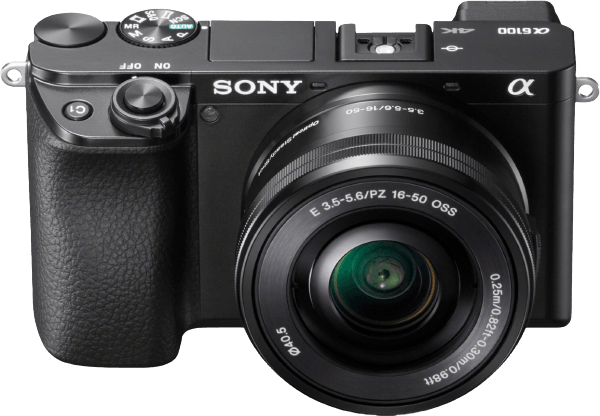
- The a6100 will surely win some side-eye from photogs who wouldn’t be discovered dead utilizing a unit focal point, however, its plastic outside isn’t unstable. The body gauges in at 2.6 by 4.7 by 2.3 inches (HWD) and gauges 14 ounces without a focal point joined. It’s a rangefinder-style design, with the electronic viewfinder situated at the back left corner, instead of centered behind the lens.
The a6100 keeps it simple when we see it’s control buttons. The top plate houses the shutter release, power switch, Mode dial, control dial, and customizable C1 button. As a matter of course, C1 sets the autofocus mode, however, you can reconfigure it whenever wanted.
The Record button is at an odd spot, settled in at the right side of the back thumb rest, with the goal that it’s nearly on the correct side of the camera. You can handicap one-contact video recording if you need to, as it is conceivable to squeeze it unintentionally—if you do as such, you’ll have to switch the Mode dial to the film position to move video.
Other rear controls are all the more traditionally situated. There’s a flat command dial with a catch at its middle and four directional presses—Display, ISO, EV, and Drive/Self-Timer. There are additional buttons to get to the menu, lock exposure, play and erase photographs, and to get to the on-screen Fn menu. The mechanical release for the spring up streak is additionally on the back, just like the EVF diopter.
The 3-inch LCD is mounted on a pivot, and can flip up and forward to effectively outline selfies—the camera consequently enters a selfie mode, complete with a three-second commencement clock. The screen itself is satisfactorily sharp, 921k dabs, and its default splendor is fine for most shooting. There’s a radiant climate mode accessible that lights up it altogether, open through the menu.
The Sony a6000 has been our top suggestion as a reasonable camera for shooting music videos for nearly an incredible whole in the commercial center. It was unequaled upon its delivery, which has given it genuinely long legs.
In any case, time walks on, and the a6000—still discounted for around $550 as a body in particular—is feeling the loss of a portion of the highlights we expect in a camera sold in 2024. In particular, it doesn’t offer 4K video catch or a touch LCD and keeping in mind that it can fire its screen rapidly, its self-adjust framework isn’t close to as incredible as more up to date cameras.
There’s an unassuming handgrip, wrapped by a leatherette. It’s fine for use with littler lenses, yet I’d hope to climb to an a6400 or a6600, or even a full-outline a7 III, on the off chance that you hope to utilize bigger heavier glass.
Pros
- Light and compact.
- Built-in EVF.
- Tilting touch LCD.
- Superlative autofocus.
- Loads of lens choices.
- Up to 11fps Raw capture.
- 4K video.
Cons
- Not as well-built as the a6400.
- Low-resolution EVF.
- 4K video can show some wobble.
- Underwhelming battery life.
- The charging port isn’t USB-C.
10. Sony a7 III ILCE7M3/B Full-Frame Mirrorless Interchangeable-Lens Camera
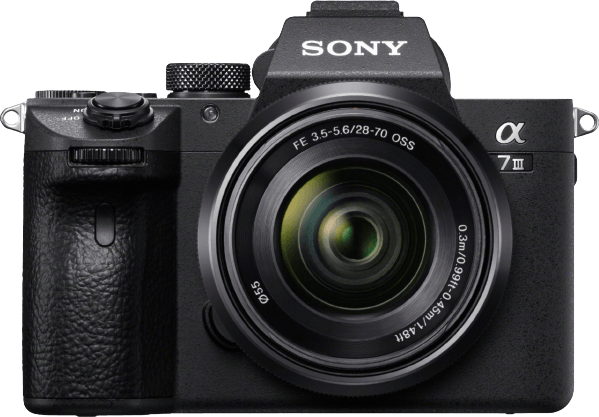
- Past just updates to the imaging system, the a7 III’s body configuration has additionally been overhauled to incorporate a back 3.0″ 922k-dot touchscreen LCD, which has a tilting configuration to all the more likely help working from high and low angles.
A 2.36m-dot Tru-Finder OLED EVF is additionally highlighted for brilliant and clear eye-level checking. For more prominent shooting adaptability, double SD memory card spaces are presently included, and a bigger NP-FZ100 battery is likewise utilized to accomplish up to roughly 710 shots for each charge.
Fitting the camera’s utilization in attempting conditions, the magnesium-combination suspension and climate fixing likewise render the a7 III residue and dampness safe.
While Nikon and Canon are caught up with wasting time (or possibly giving that impression) with regards to genuine mirrorless cameras, Sony is surprising the market. The eminent A9 is the camera to beat, however on the off chance that you don’t have an extra 5k lying around, it’s not open to most.
Step in the A7 III, an awesome all-rounder accessible at a considerably more moderate £2,000. For that money, you get a terrible part of highlights, including 10fps shooting, a 24.2-megapixel back-lit-up sensor, fabulous 4K video creation and a body which is little and minimized.
The general framework is still huge – focal points despite everything should be entirely huge to be coordinated with a full-outline sensor – however something else, this is nearly the ideal camera for fans now.
Pros
- Fantastic AF system
- 10fps burst shooting
- 4K video
- Compact body
Cons
- Limited touchscreen functionality
- The overall system still large

